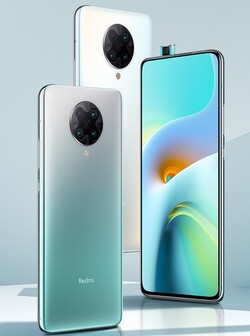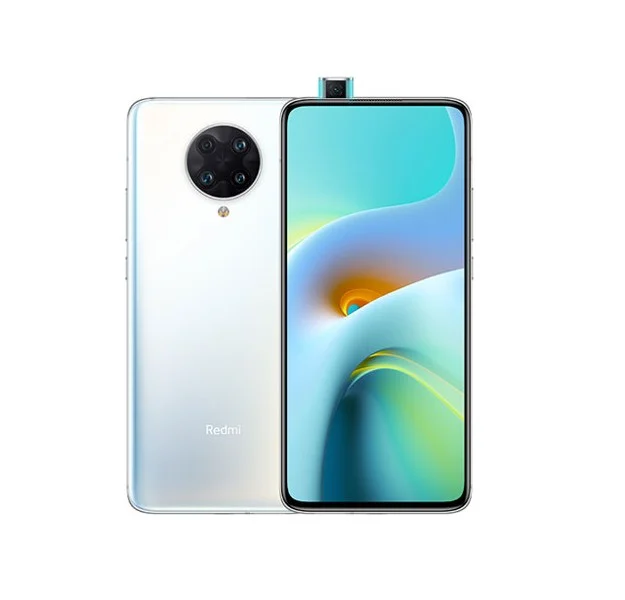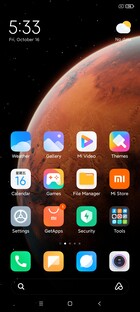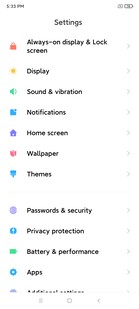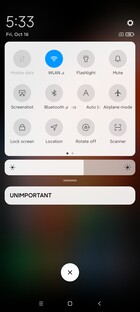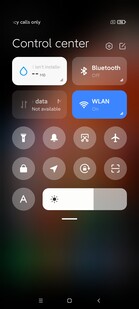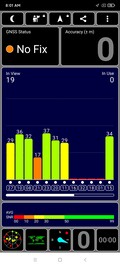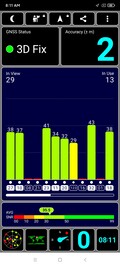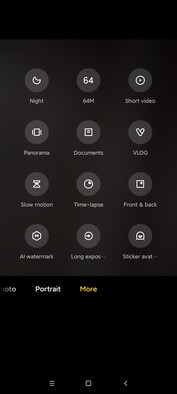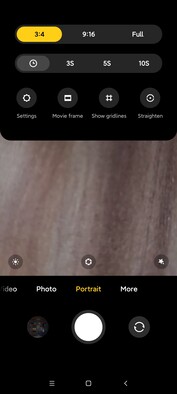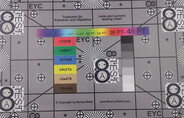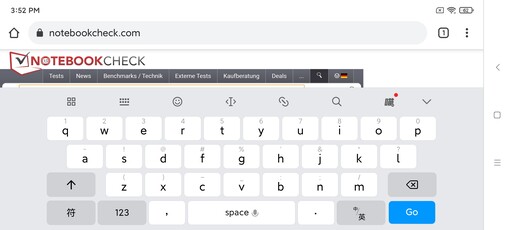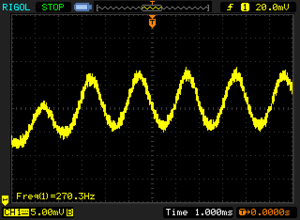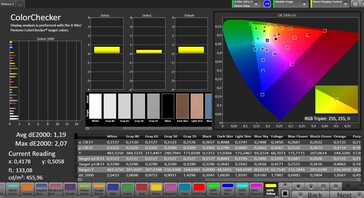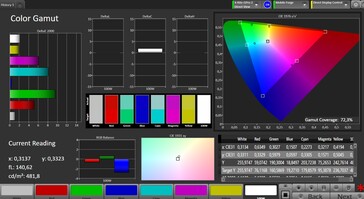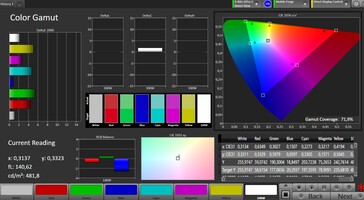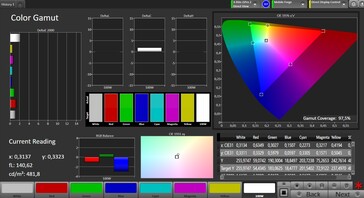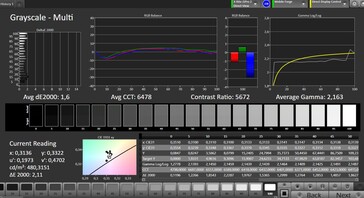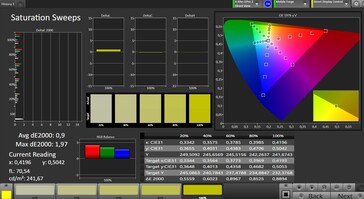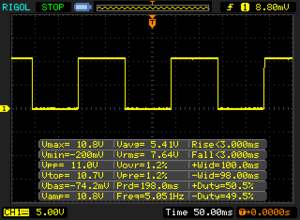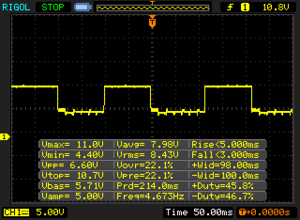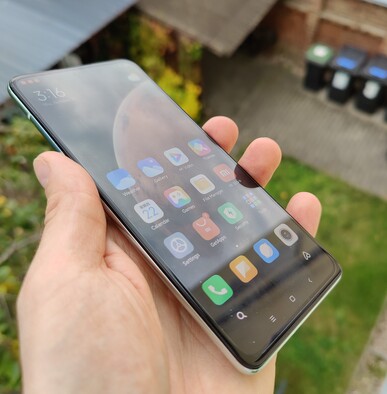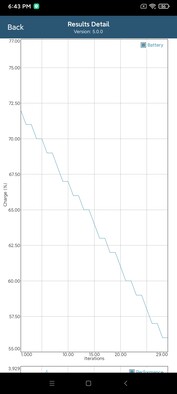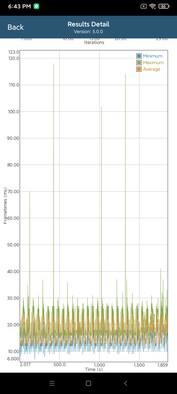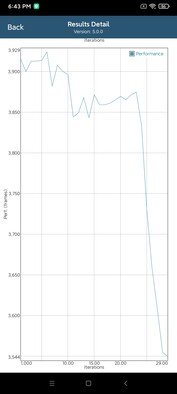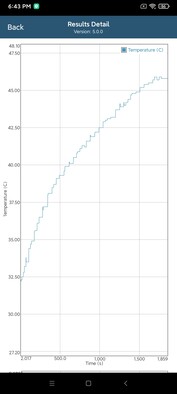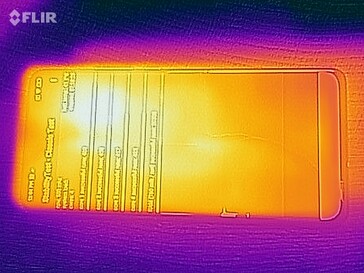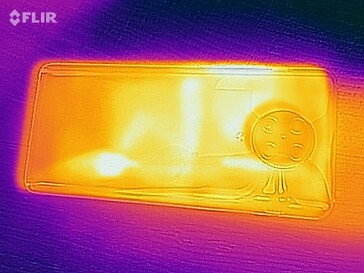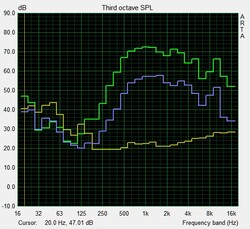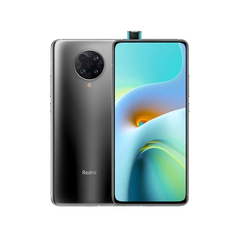Xiaomi Redmi K30 Ultra smartphone review - 120 Hz AMOLED at a bargain price

In addition to the Mi 10 Ultra, Xiaomi also introduced the Redmi K30 Ultra in August of this year on the occasion of its 10th anniversary; the K30 Ultra is expected to score points with a strong price-performance ratio. The mid-range phone currently costs around 330 Euros (~$391) in the CN version with 6 GB of RAM and has plenty of features, a MediaTek Dimensity 1000+, a quad-camera setup as well as a 120 Hz OLED panel, and a display size of 6.67 inches. The top version with 512 GB of flash memory and 8 GB of RAM costs about 410 Euros (~$486).
Even more annoying is the fact that the Redmi K30 Ultra will probably not be launched in Germany.
Comparison devices
Rating | Date | Model | Weight | Drive | Size | Resolution | Price |
|---|---|---|---|---|---|---|---|
| 85.4 % v7 (old) | 10 / 2020 | Xiaomi Redmi K30 Ultra Dimensity 1000+, Mali-G77 MP9 | 213 g | 128 GB UFS 2.1 Flash | 6.67" | 2400x1080 | |
| 83.6 % v7 (old) | 07 / 2020 | OnePlus Nord SD 765G, Adreno 620 | 184 g | 256 GB UFS 2.1 Flash | 6.44" | 2440x1080 | |
| 84 % v7 (old) | 08 / 2020 | Xiaomi Mi 10 Lite 5G SD 765G, Adreno 620 | 192 g | 128 GB UFS 2.1 Flash | 6.57" | 2340x1080 | |
| 82.1 % v7 (old) | 02 / 2020 | Samsung Galaxy A71 SD 730, Adreno 618 | 179 g | 128 GB UFS 2.0 Flash | 6.70" | 2400x1080 | |
| 83.8 % v7 (old) | 10 / 2020 | ZTE Axon 11 5G SD 765G, Adreno 620 | 168 g | 128 GB UFS 2.1 Flash | 6.47" | 2340x1080 | |
| 83.6 % v7 (old) | 09 / 2020 | Google Pixel 4a SD 730G, Adreno 618 | 143 g | 128 GB UFS 2.0 Flash | 5.80" | 2340x1080 |
Case - Xiaomi smartphone without notch
Similar to the Poco F2 Pro, there's a 6.67-inch screen on the front that doesn't make use of a notch or a punch hole. The pop-up camera of the K30 Ultra is responsible for this. The bezels around the OLED panel are also very narrow for this price class. At a good 87%, the front of the Redmi phone has one of the most efficient screen-to-body ratios in the mid-price segment.
The case has a high-quality appearance and is ergonomic thanks to the curved glass back. The keys for volume control and the on/off function are easily accessible and have pleasant pressure points. However, the K30 Ultra lacks an IP certification.
Connectivity - Xiaomi phone with status LED
The equipment of the Redmi smartphone includes an IR blaster, a status LED, and USB OTG. Also in the Chinese version of the K30 Ultra, video content can be viewed in HD quality on streaming platforms thanks to the presence of Widevine DRM Level 1.
After the initial setup, our test device's 128 GB of internal UFS 2.1 storage still offers 104 GB to use freely. If you need more storage space, you have to choose between the 256 GB or 512 GB version, since an expansion of the built-in data storage via SD cards isn't supported.
Software - Redmi K30 Ultra with MiUI 12
The operating system of the Redmi K30 Ultra is based on Google's Android 10; at the time of testing, the security patches are at the level of September 2020. The manufacturer has placed its in-house MiUI 12.0.12 on top of Google's version.
Since the K30 Ultra is designed for the Chinese market, the in-house MiUI software doesn't support Google services out of the box, and only English is available as system language besides Chinese. Unlike with Huawei smartphones, however, Google services can be installed easily afterwards.
Communication and GPS - K30 Ultra with fast WLAN
The K30 Ultra offers a lot when it comes to home WLAN. The latest WLAN Wi-Fi 6 standard and multi-user MIMO are supported, which ensures high and also relatively constant transfer rates in the home network. In combination with our Netgear Nighthawk AX12 reference router, the Xiaomi phone achieves transfer speeds of over 800 Mb/s, which is excellent for a smartphone in this price class.
Xiaomi's communication modules support dual SIM, 5G, and Bluetooth 5.1. An NFC chip for near-field communication is also on board, but since the K30 Ultra isn't "Play Protection Certified", Google Pay is not likely to work.
The Redmi phone supports access to a total of 12 LTE bands, but it doesn't cover all the relevant LTE frequencies for Germany; the LTE band 20 and band 28 are missing.
| Networking | |
| iperf3 transmit AX12 | |
| Xiaomi Redmi K30 Ultra | |
| Xiaomi Mi 10 Lite 5G | |
| Google Pixel 4a | |
| OnePlus Nord | |
| ZTE Axon 11 5G | |
| Samsung Galaxy A71 | |
| iperf3 receive AX12 | |
| Xiaomi Redmi K30 Ultra | |
| Google Pixel 4a | |
| ZTE Axon 11 5G | |
| OnePlus Nord | |
| Xiaomi Mi 10 Lite 5G | |
| Samsung Galaxy A71 | |
The current position is determined using the GPS, GLONASS, and Beidou satellite networks as well as the SBAS satellite-based complementary system. Determining the current location inside buildings doesn't work with our test sample; the positioning times outdoors are remarkably long as well.
In order to be able to estimate the positioning accuracy of our test device in practice, we usually track a route with the Garmin Edge 520 and the test smartphone. Due to tracking problems, however, we can't provide these results for the K30 Ultra.
Telephone and call quality - Xiaomi smartphone with dual SIM
Cameras - K30 Ultra with quad-camera setup
Compared to the K30 Pro, the camera setup of the K30 Ultra has hardly changed. Xiaomi continues to use a 64 MP main camera and a 13 MP ultra wide-angle camera as well as a 5 MP lens for macro shots and a ToF sensor. A telephoto lens for zoom shots is not available, so that high-magnification photos aren't really able to convince in terms of quality. With the motorized 20 MP pop-up selfie camera, you can achieve appealing, quite color-accurate selfies when there's a lot of light. Sharpness and blur, however, are in need of improvement.
The 64 MP wide-angle module with the Sony IMX686 as image sensor has visible weaknesses in low-light conditions. But even in daylight, the image sharpness isn't optimal, especially at the edges of the pictures. Photos taken with the ultra wide-angle lens show a typical loss of detail and, above all, dynamic range. In addition, many image errors slip into the pictures taken with the K30 Ultra.
Videos in UHD are only possible at 30 frames per second. Furthermore, you can't switch between lenses when recording.
Image comparison
Choose a scene and navigate within the first image. One click changes the position on touchscreens. One click on the zoomed-in image opens the original in a new window. The first image shows the scaled photograph of the test device.
Main cameraLow lightMain cameraWide angle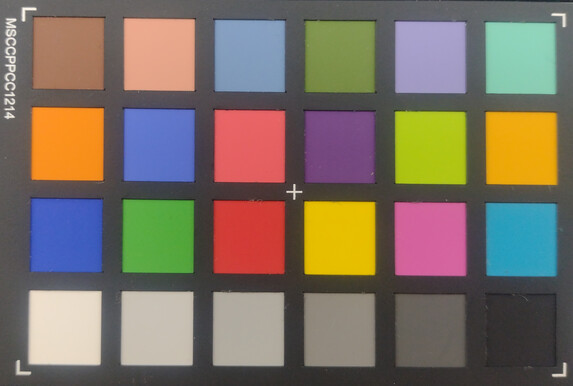
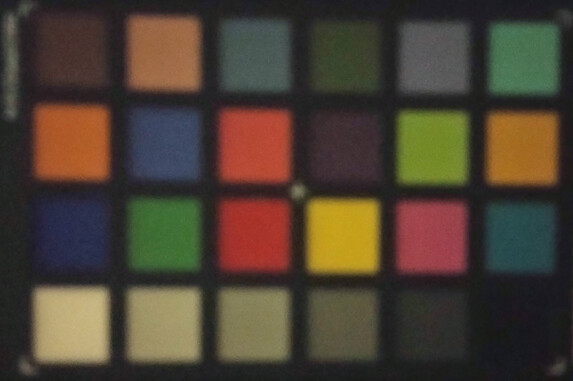
Accessories and warranty - The Redmi phone comes with a case
In the box, the K30 Ultra comes with a USB cable, a protective case, and a modular 33-watt CN power adapter.
In addition, TradingShenzhen includes an EU adapter for the sockets used in this country, but this isn't part of the standard delivery scope but is a service provided by our test device loaner.
There is a 12-month warranty. With our test device from TradingShenzhen, there's also the possibility to send the K30 Ultra to a German shipping address in case of a warranty claim.
Input devices and handling - Xiaomi smartphone with 240 Hz
A feature often underestimated in everyday use is the vibration system. The vibration motor in the K30 Ultra provides very good haptic feedback for this price segment and operates at a high-quality level.
Not only does the refresh rate (120 Hz) clearly exceed the 60 Hz mark but also the touchscreen's sampling rate (240 Hz), so that inputs on the 6.67-inch OLED panel are implemented with fast responsiveness.
An optical fingerprint scanner is located below the display, but it doesn't always respond quickly. A biometric authentication via face recognition using the front camera unlocks the K30 Ultra reliably, but it's rather unsafe (2D).
Display - Redmi K30 Ultra with AMOLED
The Xiaomi smartphone uses a 6.67-inch AMOLED display running at 120 Hz that has a resolution of 2400x1080 pixels. The display is also HDR10-certified. The MiraEngine in the Dimensity 1000+ ensures that SDR content is converted into HDR.
Although the OLED display achieves a high luminance of 788 cd/m² with a very homogeneous distribution, the brightness that we measured might still not be optimal for High Dynamic Range content.
In addition, we verify the brightness in our test with an evenly distributed proportion of dark to light areas (APL50). We were also able to determine a high brightness of 780 cd/m² here.
The Xiaomi smartphone uses pulse width modulation (PWM) at a frequency of 270 Hz for brightness control. We can't find a DC-dimming mode in the settings menu.
| |||||||||||||||||||||||||
Brightness Distribution: 98 %
Center on Battery: 775 cd/m²
Contrast: ∞:1 (Black: 0 cd/m²)
ΔE ColorChecker Calman: 1.19 | ∀{0.5-29.43 Ø4.82}
ΔE Greyscale Calman: 1.6 | ∀{0.09-98 Ø5.1}
97.5% sRGB (Calman 2D)
Gamma: 2.163
CCT: 6478 K
| Xiaomi Redmi K30 Ultra AMOLED, 2400x1080, 6.7" | OnePlus Nord AMOLED, 2440x1080, 6.4" | Xiaomi Mi 10 Lite 5G AMOLED, 2340x1080, 6.6" | Samsung Galaxy A71 AMOLED, 2400x1080, 6.7" | ZTE Axon 11 5G AMOLED, 2340x1080, 6.5" | Google Pixel 4a OLED, 2340x1080, 5.8" | |
|---|---|---|---|---|---|---|
| Screen | -51% | -16% | -74% | -90% | 5% | |
| Brightness middle | 775 | 529 -32% | 584 -25% | 629 -19% | 603 -22% | 705 -9% |
| Brightness | 780 | 531 -32% | 583 -25% | 646 -17% | 608 -22% | 707 -9% |
| Brightness Distribution | 98 | 94 -4% | 97 -1% | 95 -3% | 92 -6% | 96 -2% |
| Black Level * | ||||||
| Colorchecker dE 2000 * | 1.19 | 2.53 -113% | 1.17 2% | 2.7 -127% | 3 -152% | 0.9 24% |
| Colorchecker dE 2000 max. * | 2.07 | 4.52 -118% | 2.95 -43% | 6 -190% | 6.2 -200% | 1.9 8% |
| Greyscale dE 2000 * | 1.6 | 1.7 -6% | 1.7 -6% | 3 -88% | 3.8 -138% | 1.3 19% |
| Gamma | 2.163 102% | 2.249 98% | 2.231 99% | 2.1 105% | 2.21 100% | 2.26 97% |
| CCT | 6478 100% | 6462 101% | 6341 103% | 6340 103% | 7242 90% | 6576 99% |
* ... smaller is better
Screen Flickering / PWM (Pulse-Width Modulation)
| Screen flickering / PWM detected | 270.3 Hz | ||
The display backlight flickers at 270.3 Hz (worst case, e.g., utilizing PWM) . The frequency of 270.3 Hz is relatively high, so most users sensitive to PWM should not notice any flickering. However, there are reports that some users are still sensitive to PWM at 500 Hz and above, so be aware. In comparison: 53 % of all tested devices do not use PWM to dim the display. If PWM was detected, an average of 8316 (minimum: 5 - maximum: 343500) Hz was measured. | |||
In addition to a pronounced contrast, the K30 Ultra offers high color-space coverage. The panel is very well calibrated out of the box. The analysis of the spectrophotometer and the CalMAN software results in very small Delta E average deviations of 1.2 (colors) and 1.6 (grayscales) from the sRGB color space (profile: standard).
Display Response Times
| ↔ Response Time Black to White | ||
|---|---|---|
| 6 ms ... rise ↗ and fall ↘ combined | ↗ 3 ms rise | |
| ↘ 3 ms fall | ||
| The screen shows very fast response rates in our tests and should be very well suited for fast-paced gaming. In comparison, all tested devices range from 0.1 (minimum) to 240 (maximum) ms. » 16 % of all devices are better. This means that the measured response time is better than the average of all tested devices (20.4 ms). | ||
| ↔ Response Time 50% Grey to 80% Grey | ||
| 8 ms ... rise ↗ and fall ↘ combined | ↗ 5 ms rise | |
| ↘ 3 ms fall | ||
| The screen shows fast response rates in our tests and should be suited for gaming. In comparison, all tested devices range from 0.165 (minimum) to 636 (maximum) ms. » 19 % of all devices are better. This means that the measured response time is better than the average of all tested devices (32 ms). | ||
Performance - Redmi smartphone with Dimensity 1000+
The MediaTek Dimensity 1000+ is a 7 nm SoC that integrates four fast Cortex-A77 cores as well as four Cortex-A55 power-saving cores. The graphics unit is a Mali-G77 MP9. According to MediaTek, the APU 3.0 of the Dimensity 1000+ should be able to handle a theoretical peak performance of 4.5 TOPS through the 6 AI processors.
In our benchmark package, the K30 Ultra places itself at the front line. The Redmi phone is more at the level of a Snapdragon 855 Plus than at that of the mid-range competition. Especially in the graphics benchmarks, the K30 Ultra is almost "worlds apart" from the comparison smartphones with the Snapdragon 765G. In addition, the internal UFS storage is very fast for this price range.
| PCMark for Android | |
| Work performance score (sort by value) | |
| Xiaomi Redmi K30 Ultra | |
| OnePlus Nord | |
| Xiaomi Mi 10 Lite 5G | |
| Samsung Galaxy A71 | |
| ZTE Axon 11 5G | |
| Google Pixel 4a | |
| Average MediaTek Dimensity 1000+ (n=1) | |
| Work 2.0 performance score (sort by value) | |
| Xiaomi Redmi K30 Ultra | |
| OnePlus Nord | |
| Xiaomi Mi 10 Lite 5G | |
| Samsung Galaxy A71 | |
| ZTE Axon 11 5G | |
| Google Pixel 4a | |
| Average MediaTek Dimensity 1000+ (n=1) | |
| AnTuTu v8 - Total Score (sort by value) | |
| Xiaomi Redmi K30 Ultra | |
| OnePlus Nord | |
| Xiaomi Mi 10 Lite 5G | |
| Samsung Galaxy A71 | |
| ZTE Axon 11 5G | |
| Google Pixel 4a | |
| Average MediaTek Dimensity 1000+ (n=1) | |
| VRMark - Amber Room (sort by value) | |
| Xiaomi Redmi K30 Ultra | |
| Average MediaTek Dimensity 1000+ (n=1) | |
| Average of class Smartphone (n=1last 2 years) | |
| Jetstream 2 - 2.0 Total Score | |
| Average of class Smartphone (13.8 - 387, n=151, last 2 years) | |
| OnePlus Nord (Chrome 84) | |
| Xiaomi Mi 10 Lite 5G (Chrome83) | |
| Average MediaTek Dimensity 1000+ (n=1) | |
| Xiaomi Redmi K30 Ultra (Chrome 86) | |
| Google Pixel 4a (Chrome 85) | |
| ZTE Axon 11 5G (Chrome 83) | |
| Samsung Galaxy A71 (Chrome 79.0.3945.136) | |
| JetStream 1.1 - Total Score | |
| OnePlus Nord (Chrome 84) | |
| Xiaomi Mi 10 Lite 5G | |
| Xiaomi Redmi K30 Ultra (Chrome 86) | |
| Average MediaTek Dimensity 1000+ (n=1) | |
| ZTE Axon 11 5G (Chrome 83) | |
| Google Pixel 4a (Chrome 85) | |
| Samsung Galaxy A71 (Chrome 79.0.3945.136) | |
| Speedometer 2.0 - Result | |
| Average of class Smartphone (15.2 - 585, n=136, last 2 years) | |
| OnePlus Nord (Chome 84) | |
| Xiaomi Redmi K30 Ultra (Chrome 86) | |
| Average MediaTek Dimensity 1000+ (n=1) | |
| ZTE Axon 11 5G (Chrome 83) | |
| Xiaomi Mi 10 Lite 5G (Chrome83) | |
| Google Pixel 4a (Chrome 85) | |
| Samsung Galaxy A71 (Chrome 79.0.3945.136) | |
| WebXPRT 3 - Overall | |
| Average of class Smartphone (38 - 347, n=55, last 2 years) | |
| OnePlus Nord (Chrome 84) | |
| Xiaomi Mi 10 Lite 5G (Chrome83) | |
| Xiaomi Redmi K30 Ultra (Chrome 86) | |
| Average MediaTek Dimensity 1000+ (n=1) | |
| ZTE Axon 11 5G (Chrome 83) | |
| Google Pixel 4a (Chrome 85) | |
| Samsung Galaxy A71 (Chrome 79.0.3945.136) | |
| Octane V2 - Total Score | |
| Average of class Smartphone (2228 - 100368, n=203, last 2 years) | |
| Xiaomi Redmi K30 Ultra (Chrome 86) | |
| Average MediaTek Dimensity 1000+ (n=1) | |
| OnePlus Nord (Chrome 84) | |
| Xiaomi Mi 10 Lite 5G (Chrome83) | |
| ZTE Axon 11 5G (Chrome 83) | |
| Google Pixel 4a (Chrome 85) | |
| Samsung Galaxy A71 (Chrome 79.0.3945.136) | |
| Mozilla Kraken 1.1 - Total | |
| Samsung Galaxy A71 (Chrome 79.0.3945.136) | |
| ZTE Axon 11 5G (Chrome 83) | |
| Google Pixel 4a (Chrome 85) | |
| OnePlus Nord (Chrome 84) | |
| Xiaomi Redmi K30 Ultra (Chrome 86) | |
| Average MediaTek Dimensity 1000+ (n=1) | |
| Xiaomi Mi 10 Lite 5G (Chrome83) | |
| Average of class Smartphone (277 - 28190, n=157, last 2 years) | |
* ... smaller is better
| Xiaomi Redmi K30 Ultra | OnePlus Nord | Xiaomi Mi 10 Lite 5G | Samsung Galaxy A71 | ZTE Axon 11 5G | Google Pixel 4a | Average 128 GB UFS 2.1 Flash | Average of class Smartphone | |
|---|---|---|---|---|---|---|---|---|
| AndroBench 3-5 | -29% | -22% | -56% | -25% | -41% | -38% | 107% | |
| Sequential Read 256KB | 975 | 956 -2% | 980 1% | 493 -49% | 956 -2% | 502 -49% | 763 ? -22% | 2181 ? 124% |
| Sequential Write 256KB | 511 | 473.1 -7% | 476.9 -7% | 192.4 -62% | 417.1 -18% | 246.8 -52% | 297 ? -42% | 1791 ? 250% |
| Random Read 4KB | 220.9 | 126.7 -43% | 156.4 -29% | 112.3 -49% | 166.3 -25% | 162.9 -26% | 153.3 ? -31% | 295 ? 34% |
| Random Write 4KB | 290 | 104.5 -64% | 138.5 -52% | 109.6 -62% | 128.4 -56% | 187.4 -35% | 131 ? -55% | 342 ? 18% |
Games - The Redmi K30 Ultra can game
The powerful Mali-G77 graphics unit offers enough computing power to ensure that even demanding games run smoothly. Asphalt 9 can be played at high details close to the 60 fps threshold; PUBG mobile is also rendered at a frame rate of 60 fps at low graphics settings. Older games such as Real Racing 3 can be displayed at a constant 60 fps as well. We determine our frame rates with the GameBench app.
PUBG mobile
Real Racing 3
Asphalt 9 Legends
Emissions - Xiaomi smartphone with light throttling
Temperature
(±) The maximum temperature on the upper side is 41.6 °C / 107 F, compared to the average of 35.2 °C / 95 F, ranging from 21.9 to 247 °C for the class Smartphone.
(+) The bottom heats up to a maximum of 38.9 °C / 102 F, compared to the average of 33.9 °C / 93 F
(+) In idle usage, the average temperature for the upper side is 22.6 °C / 73 F, compared to the device average of 32.9 °C / 91 F.
Speakers
The K30 Ultra features two speakers, which is rarely found in this price range. At a maximum volume of 81 dB, the sounding bodies are sufficiently loud; however, our measurements for the Redmi phone show a less linear frequency response for the mids, and the high tones show clear drops too. Basses are not present in the sound pattern.
Xiaomi Redmi K30 Ultra audio analysis
(±) | speaker loudness is average but good (80.8 dB)
Bass 100 - 315 Hz
(-) | nearly no bass - on average 64.3% lower than median
(+) | bass is linear (0% delta to prev. frequency)
Mids 400 - 2000 Hz
(-) | nearly no mids - on average 64.3% lower than median
(+) | mids are linear (0% delta to prev. frequency)
Highs 2 - 16 kHz
(-) | nearly no highs - on average 64.3% lower than median
(+) | highs are linear (0% delta to prev. frequency)
Overall 100 - 16.000 Hz
(-) | overall sound is not linear (133.9% difference to median)
Compared to same class
» 99% of all tested devices in this class were better, 1% similar, 0% worse
» The best had a delta of 12%, average was 36%, worst was 134%
Compared to all devices tested
» 100% of all tested devices were better, 0% similar, 0% worse
» The best had a delta of 4%, average was 24%, worst was 134%
OnePlus Nord audio analysis
(+) | speakers can play relatively loud (84.9 dB)
Bass 100 - 315 Hz
(-) | nearly no bass - on average 74.7% lower than median
(+) | bass is linear (0% delta to prev. frequency)
Mids 400 - 2000 Hz
(-) | nearly no mids - on average 74.7% lower than median
(+) | mids are linear (0% delta to prev. frequency)
Highs 2 - 16 kHz
(-) | nearly no highs - on average 74.7% lower than median
(+) | highs are linear (0% delta to prev. frequency)
Overall 100 - 16.000 Hz
(-) | overall sound is not linear (113.3% difference to median)
Compared to same class
» 87% of all tested devices in this class were better, 2% similar, 12% worse
» The best had a delta of 12%, average was 36%, worst was 134%
Compared to all devices tested
» 96% of all tested devices were better, 1% similar, 4% worse
» The best had a delta of 4%, average was 24%, worst was 134%
Battery life - Redmi K30 Ultra with 33-watt fast charging
Energy consumption
The K30 Ultra has a 4,500 mAh battery that can be charged at up to 33 watts - the necessary charger is already included in the box. Thanks to the fast-charging technology, it only takes 1 hour for the empty battery to be fully recharged.
Energy management is okay for a 6.67-inch smartphone, but power consumption under load is relatively high.
| Off / Standby | |
| Idle | |
| Load |
|
Key:
min: | |
| Xiaomi Redmi K30 Ultra 4500 mAh | OnePlus Nord 4115 mAh | Xiaomi Mi 10 Lite 5G 4160 mAh | Samsung Galaxy A71 4500 mAh | ZTE Axon 11 5G 4000 mAh | Google Pixel 4a 3140 mAh | Average MediaTek Dimensity 1000+ | Average of class Smartphone | |
|---|---|---|---|---|---|---|---|---|
| Power Consumption | 8% | 1% | 35% | 31% | 55% | 0% | 16% | |
| Idle Minimum * | 1.1 | 1.8 -64% | 1.5 -36% | 0.63 43% | 0.78 29% | 0.49 55% | 1.1 ? -0% | 0.872 ? 21% |
| Idle Average * | 1.9 | 2.1 -11% | 2.2 -16% | 1.49 22% | 1.43 25% | 0.96 49% | 1.9 ? -0% | 1.43 ? 25% |
| Idle Maximum * | 2.6 | 2.3 12% | 2.9 -12% | 1.51 42% | 1.54 41% | 1 62% | 2.6 ? -0% | 1.592 ? 39% |
| Load Average * | 6.4 | 3.4 47% | 4.4 31% | 4.62 28% | 5.04 21% | 3.11 51% | 6.4 ? -0% | 7.18 ? -12% |
| Load Maximum * | 11.9 | 5.2 56% | 7.2 39% | 7.11 40% | 7.49 37% | 5.23 56% | 11.9 ? -0% | 10.8 ? 9% |
* ... smaller is better
Battery life
In our WLAN test with an adjusted display brightness of 150 cd/m², the K30 Ultra's battery shows a lot of endurance, since it lasts for over 15 hours. Under load, however, the high consumption values have a negative effect.
| Xiaomi Redmi K30 Ultra 4500 mAh | OnePlus Nord 4115 mAh | Xiaomi Mi 10 Lite 5G 4160 mAh | Samsung Galaxy A71 4500 mAh | ZTE Axon 11 5G 4000 mAh | Google Pixel 4a 3140 mAh | |
|---|---|---|---|---|---|---|
| Battery Runtime | 4% | 46% | -3% | -11% | -15% | |
| WiFi v1.3 | 911 | 869 -5% | 884 -3% | 815 -11% | 679 -25% | 669 -27% |
| Load | 231 | 261 13% | 448 94% | 242 5% | 240 4% | 225 -3% |
Pros
Cons
Redmi K30 Ultra verdict: Xiaomi raises the bar very high
The Redmi K30 Ultra is an exciting mid-range smartphone, but it's (so far) only designed for the Chinese market. Given the price range in which the Redmi phone moves, there are hardly any real weaknesses.
The camera modules are only at an average level, the fingerprint scanner could be faster, and the stereo speakers aren't the best. In addition, there are the usual restrictions of a Chinese import like the warranty and LTE coverage.
If you can live with these disadvantages of the mid-range phone, you get for your money an above-average display, long battery life, and fast WLAN as well as a lot of performance combined with the very appealing design of the K30 Ultra that lacks an annoying notch.
Currently, you can't get a better smartphone than the K30 Ultra for 300 to 400 Euros (~$356 to ~$475).
Xiaomi Redmi K30 Ultra
- 08/31/2022 v7 (old)
Marcus Herbrich




